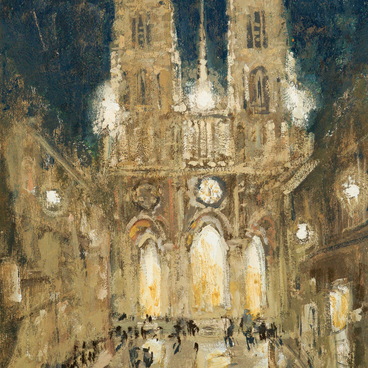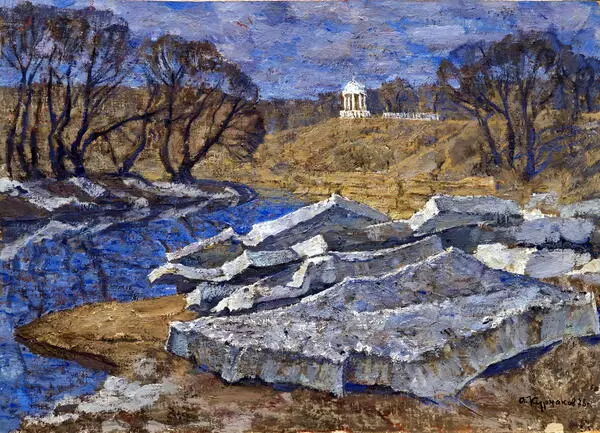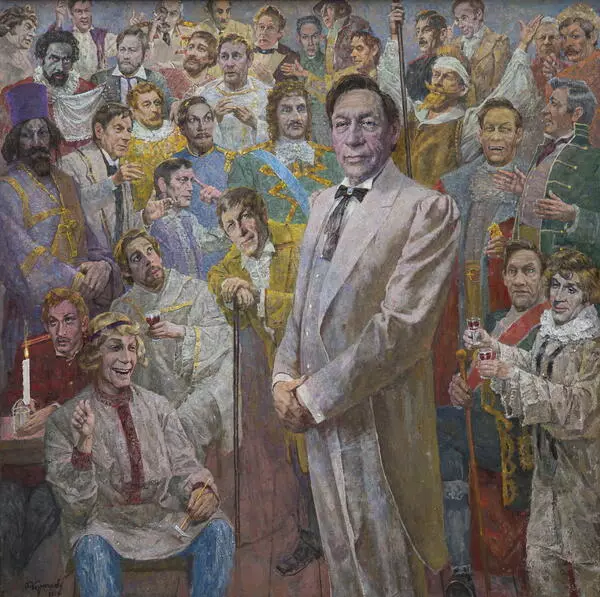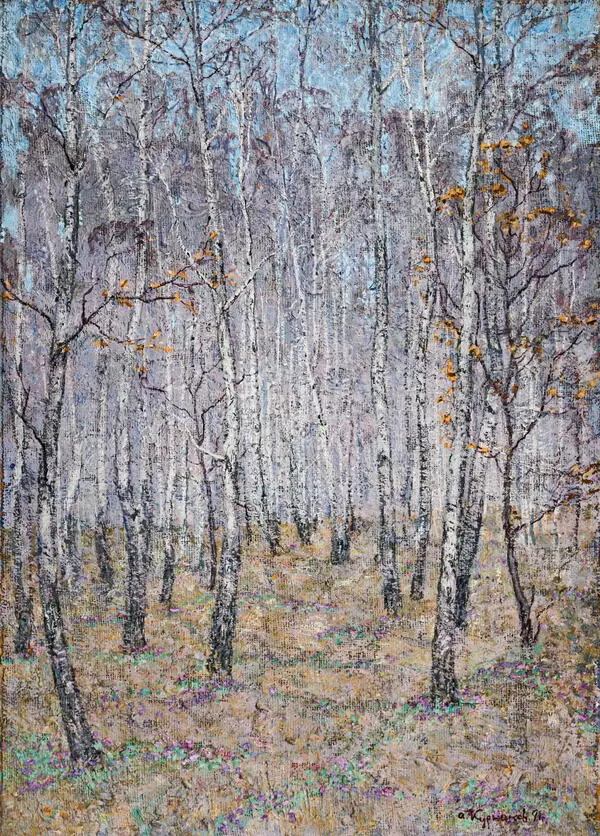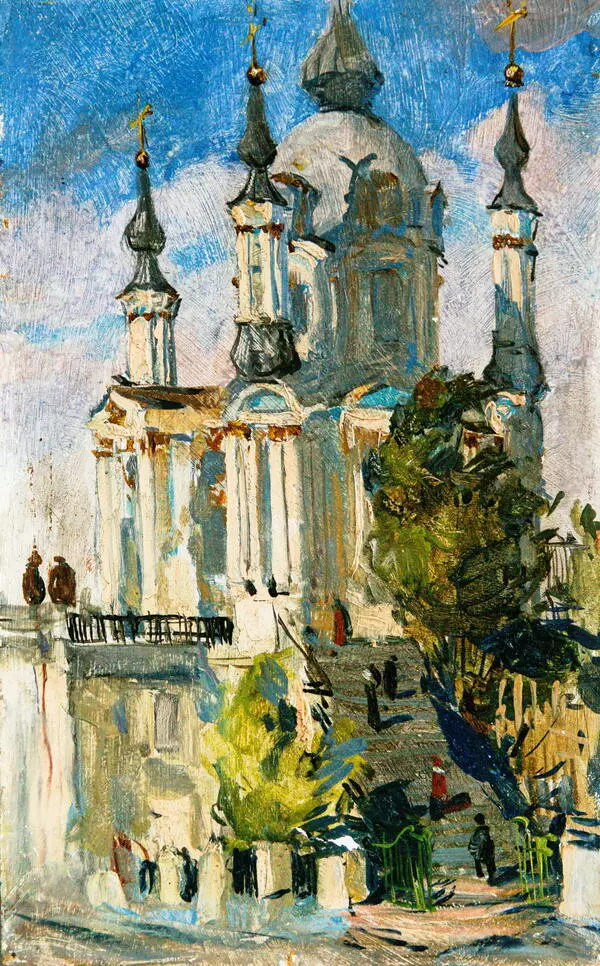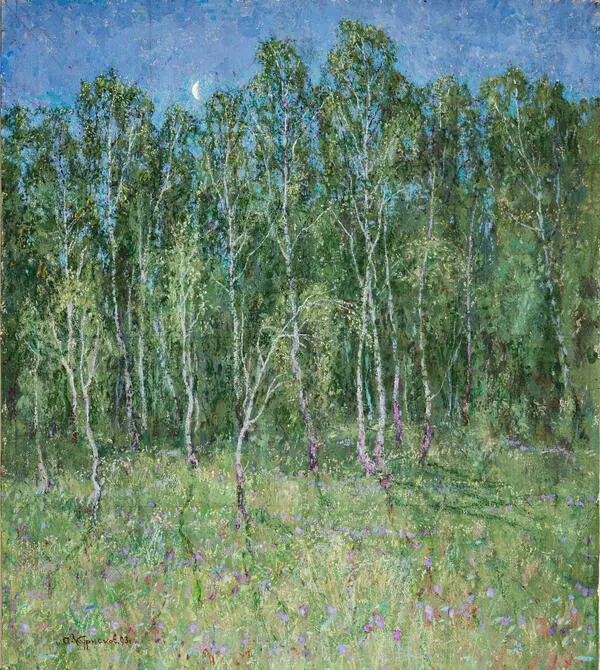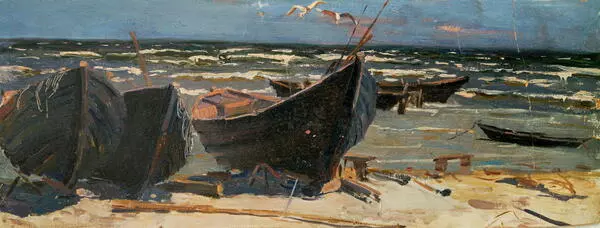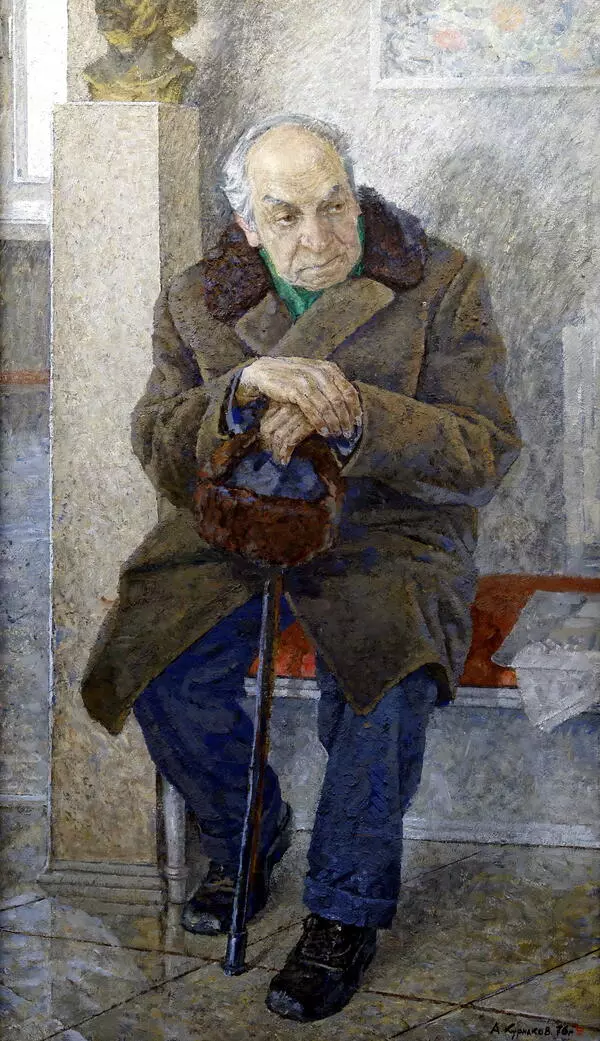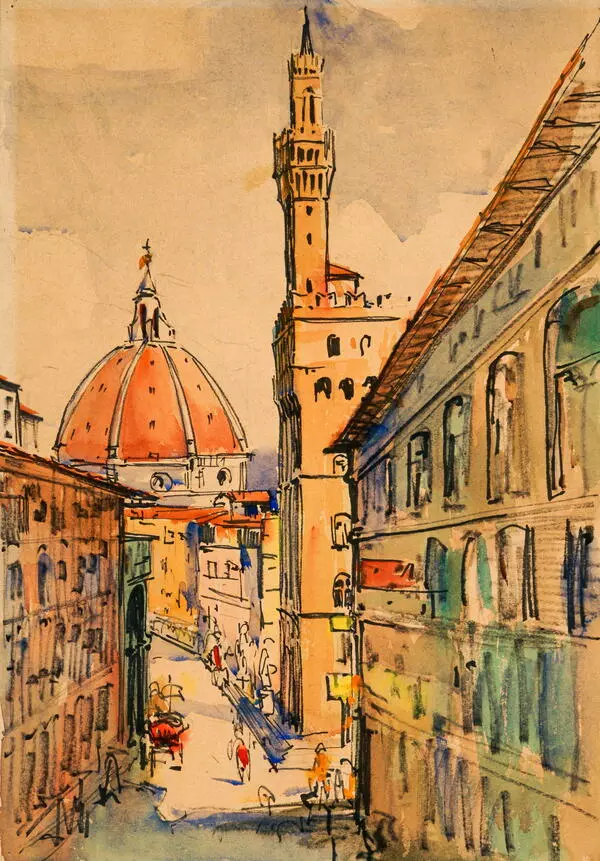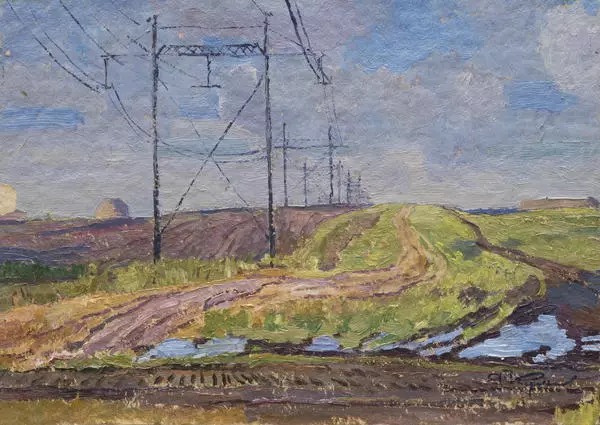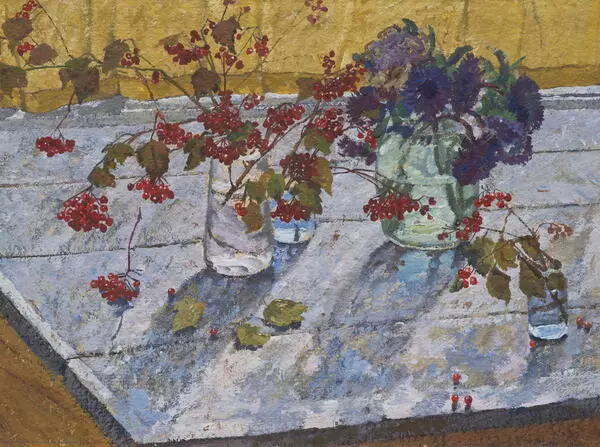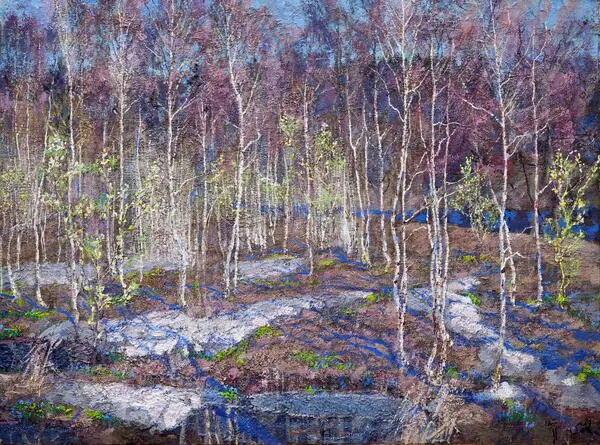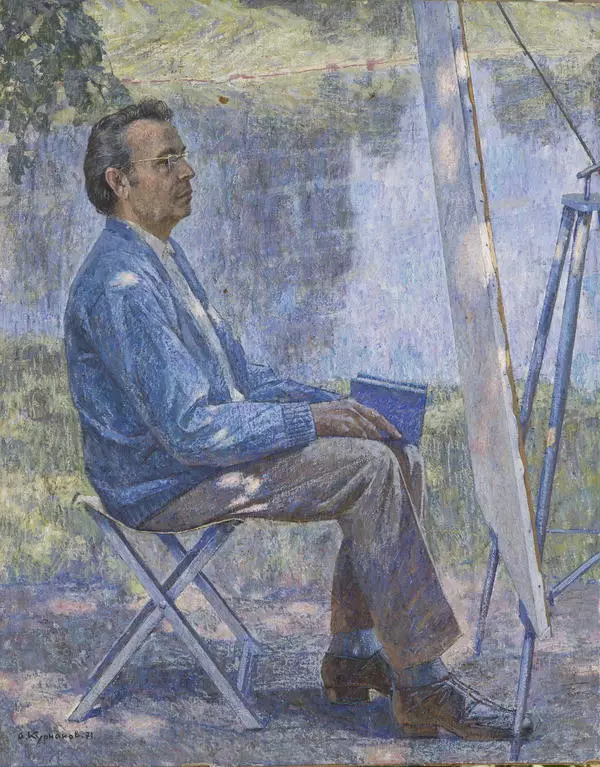Alupka is a small town on the southern coast of Crimea. Many famous people such as Chaliapin, Bunin, Rachmaninoff, and Gorky came there for inspiration and salubrious air. Andrey Kurnakov also visited this picturesque region and brought back not only memories of that place but also paintings.
The canvas of “Embankment in Alupka” has an unconventional, horizontally elongated format. The majority of the pictorial space is occupied by the picturesque mountain Ai-Petri.
The name is of Greek origin and translates as “St. Peter”. There was once a monastery in that area, and its ruins have survived to this day. Ai-Petri is actually one out of the group of peaks, to be exact, and not the highest one. Together with Mount Roka, Bodene-Kyr, and others, it is part of the Ai-Petri Yayla — a range of rather flat hills. Ai-Petri is the most famous and picturesque of them all. The peak is 1234 meters high. At its top is a flat plateau with an area of just over 300 kilometers — a place much preferred by tourists.
The gray-pink peak, illuminated by the sun, is the center of the composition. Above it is the bright blue southern sky. In the center on the right side is a pale gray silhouette of the famous Vorontsov Palace. Its construction lasted from 1828 to 1848 and it became the summer residence of Count Mikhail Vorontsov — a prominent Russian statesman and Governor-General of the Novorossiysk Territory. The palace was designed by the English architect Edward Blore.
Vorontsov wanted a real castle that combined the strictness of English architecture and the splendor of Indian palaces. As a result, the English style was seamlessly intertwined with Moorish architecture. The artist’s attention was particularly drawn to the Gothic chimneys, reminiscent of mosque minarets. The middle ground shows clusters of trees and shrubs — rich crimson and rare green add some color to this part of the canvas. In the foreground is the embankment.
The high massive masonry parapet enclosing the promenade area is decorated with large stones of various colors. It also has a rather plain metal guard rail. Around it are bright figures of people walking along the embankment in light dresses, with hats and multi-colored parasols. The wind coming from the sea winnows the thin fabrics, creating a sense of movement throughout the entire picture. The artist paints the sky, mountains and trees, adding texture and volume to them with wide impasto strokes. Some thinner strokes are used to outline the palace and its minaret-like chimneys.
The canvas of “Embankment in Alupka” has an unconventional, horizontally elongated format. The majority of the pictorial space is occupied by the picturesque mountain Ai-Petri.
The name is of Greek origin and translates as “St. Peter”. There was once a monastery in that area, and its ruins have survived to this day. Ai-Petri is actually one out of the group of peaks, to be exact, and not the highest one. Together with Mount Roka, Bodene-Kyr, and others, it is part of the Ai-Petri Yayla — a range of rather flat hills. Ai-Petri is the most famous and picturesque of them all. The peak is 1234 meters high. At its top is a flat plateau with an area of just over 300 kilometers — a place much preferred by tourists.
The gray-pink peak, illuminated by the sun, is the center of the composition. Above it is the bright blue southern sky. In the center on the right side is a pale gray silhouette of the famous Vorontsov Palace. Its construction lasted from 1828 to 1848 and it became the summer residence of Count Mikhail Vorontsov — a prominent Russian statesman and Governor-General of the Novorossiysk Territory. The palace was designed by the English architect Edward Blore.
Vorontsov wanted a real castle that combined the strictness of English architecture and the splendor of Indian palaces. As a result, the English style was seamlessly intertwined with Moorish architecture. The artist’s attention was particularly drawn to the Gothic chimneys, reminiscent of mosque minarets. The middle ground shows clusters of trees and shrubs — rich crimson and rare green add some color to this part of the canvas. In the foreground is the embankment.
The high massive masonry parapet enclosing the promenade area is decorated with large stones of various colors. It also has a rather plain metal guard rail. Around it are bright figures of people walking along the embankment in light dresses, with hats and multi-colored parasols. The wind coming from the sea winnows the thin fabrics, creating a sense of movement throughout the entire picture. The artist paints the sky, mountains and trees, adding texture and volume to them with wide impasto strokes. Some thinner strokes are used to outline the palace and its minaret-like chimneys.


